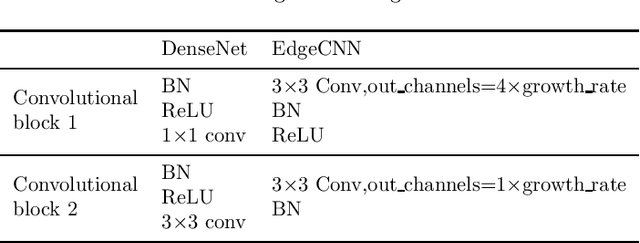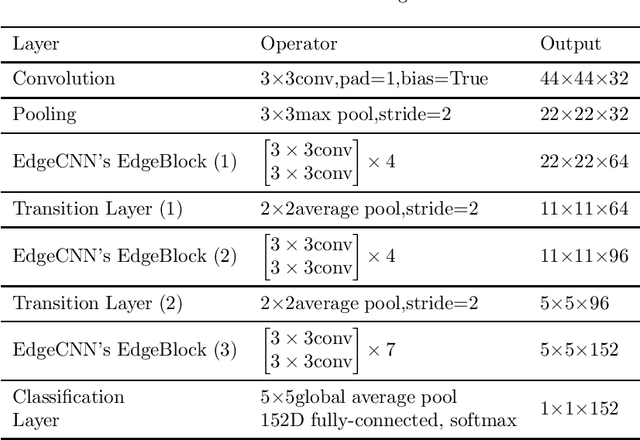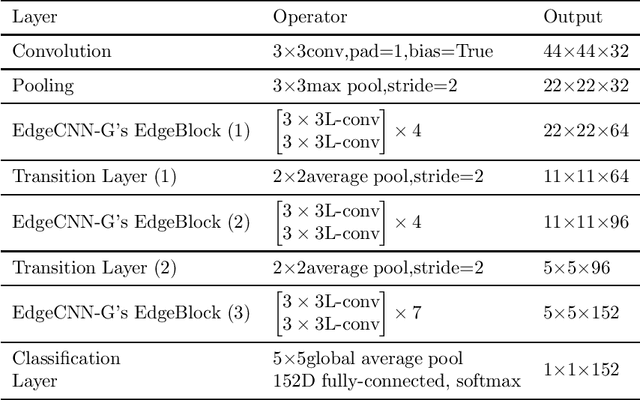Shunzhi Yang
EdgeCNN: Convolutional Neural Network Classification Model with small inputs for Edge Computing
Sep 30, 2019



Abstract:With the development of Internet of Things (IoT), data is increasingly appearing on the edge of the network. Processing tasks on the edge of the network can effectively solve the problems of personal privacy leaks and server overload. As a result, it has attracted a great deal of attention and made substantial progress. This progress includes efficient convolutional neural network (CNN) models such as MobileNet and ShuffleNet. However, all of these networks appear as a common network model and they usually need to identify multiple targets when applied. So the size of the input is very large. In some specific cases, only the target needs to be classified. Therefore, a small input network can be designed to reduce computation. In addition, other efficient neural network models are primarily designed for mobile phones. Mobile phones have faster memory access, which allows them to use group convolution. In particular, this paper finds that the recently widely used group convolution is not suitable for devices with very slow memory access. Therefore, the EdgeCNN of this paper is designed for edge computing devices with low memory access speed and low computing resources. EdgeCNN has been run successfully on the Raspberry Pi 3B+ at a speed of 1.37 frames per second. The accuracy of facial expression classification for the FER-2013 and RAF-DB datasets outperforms other proposed networks that are compatible with the Raspberry Pi 3B+. The implementation of EdgeCNN is available at https://github.com/yangshunzhi1994/EdgeCNN
 Add to Chrome
Add to Chrome Add to Firefox
Add to Firefox Add to Edge
Add to Edge